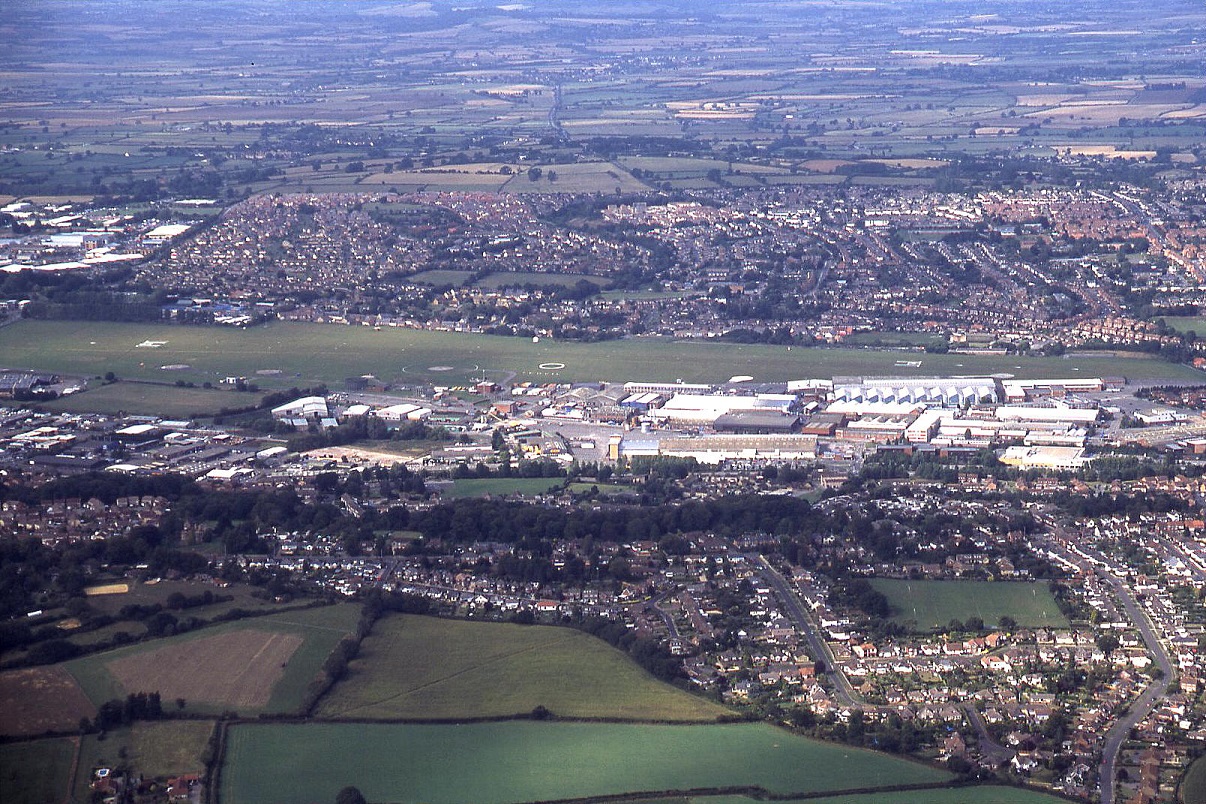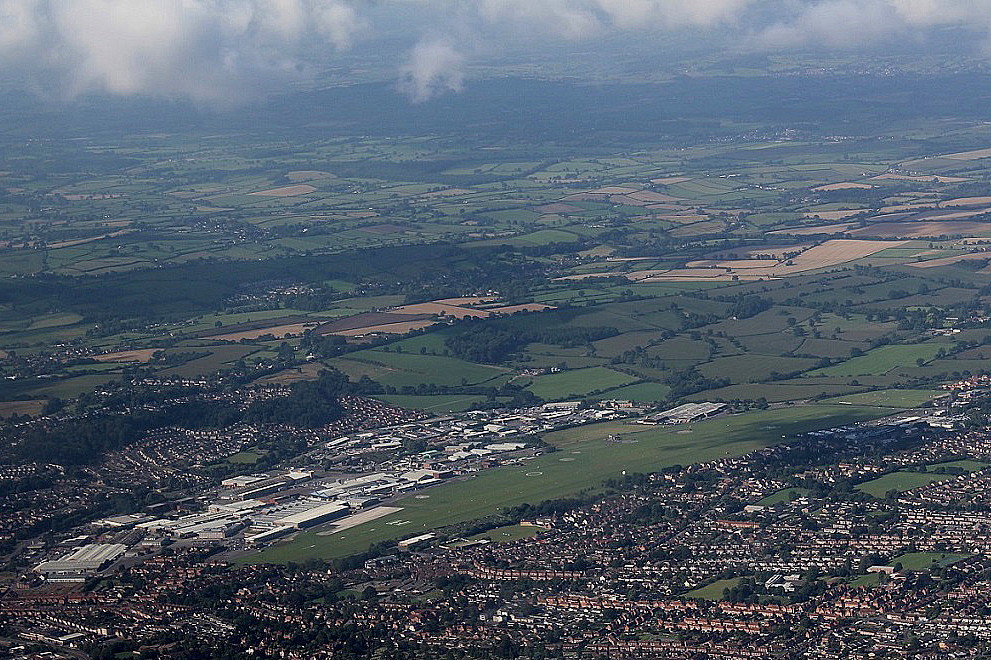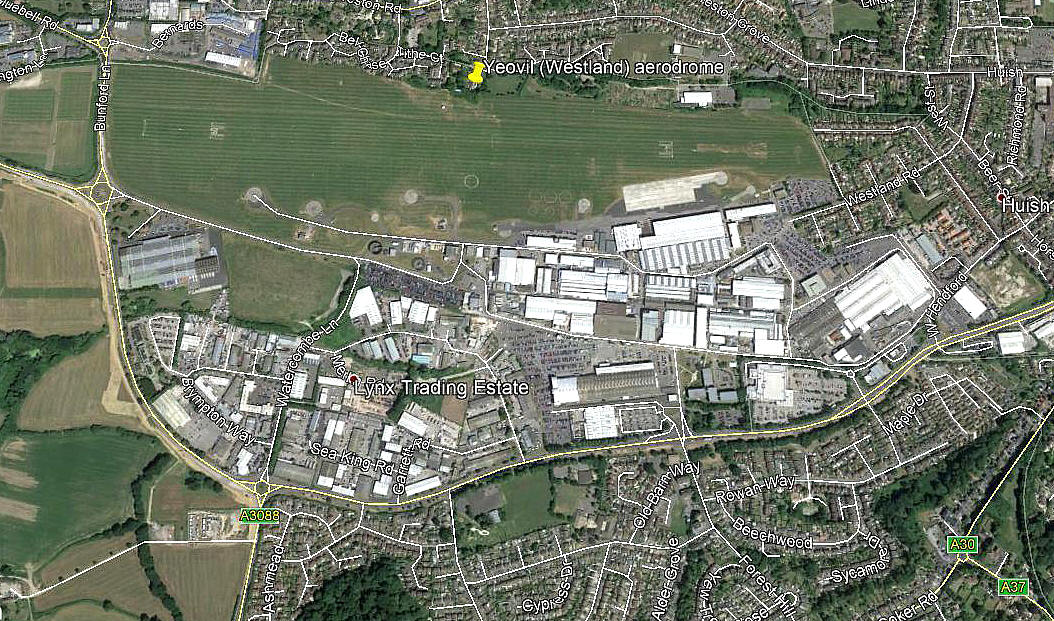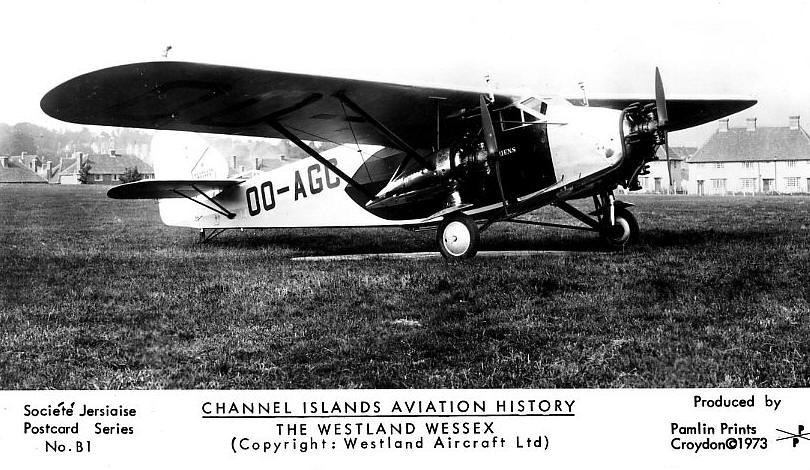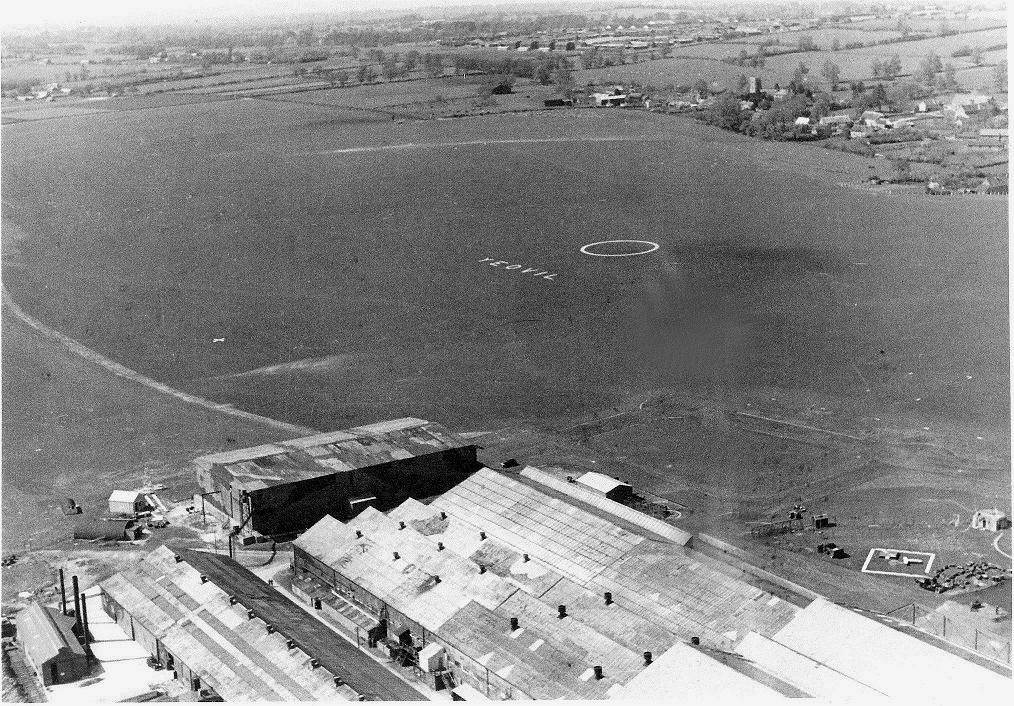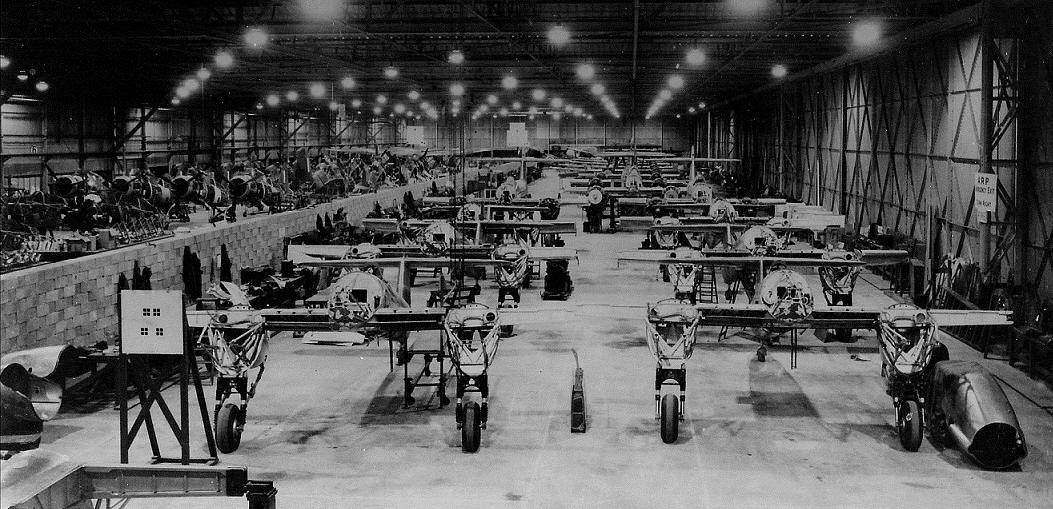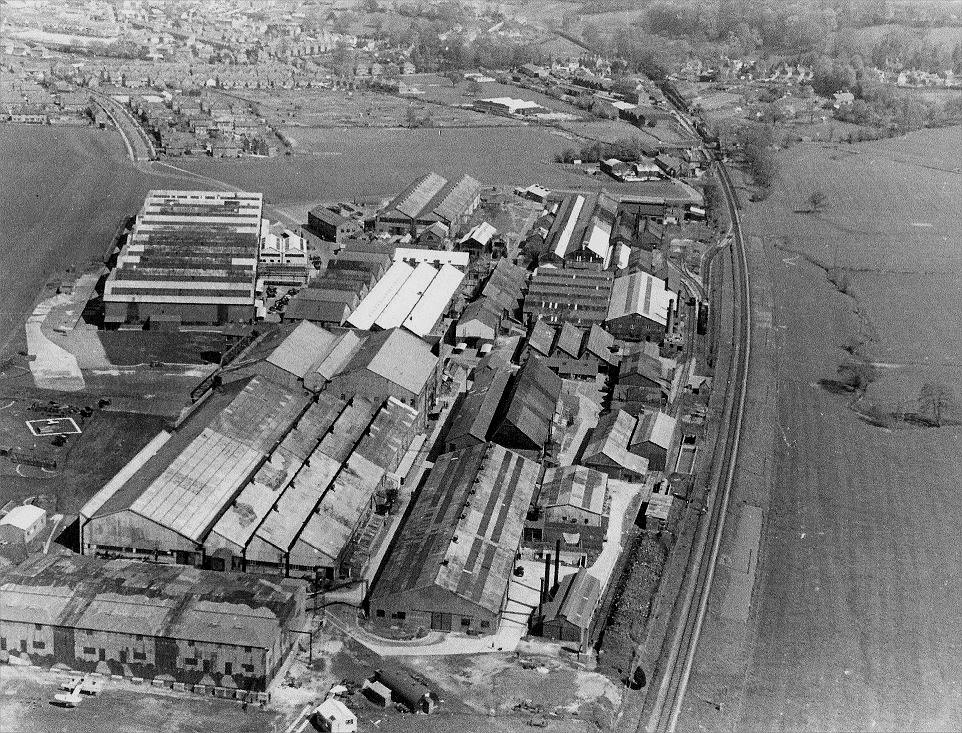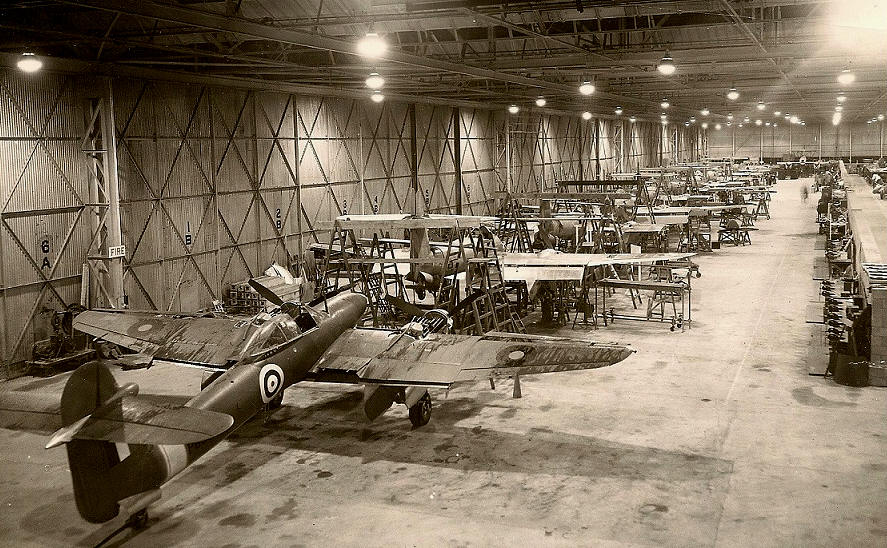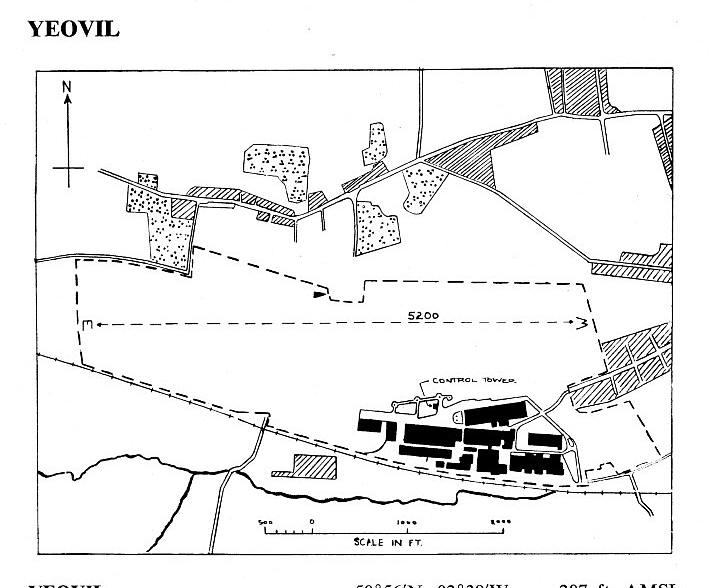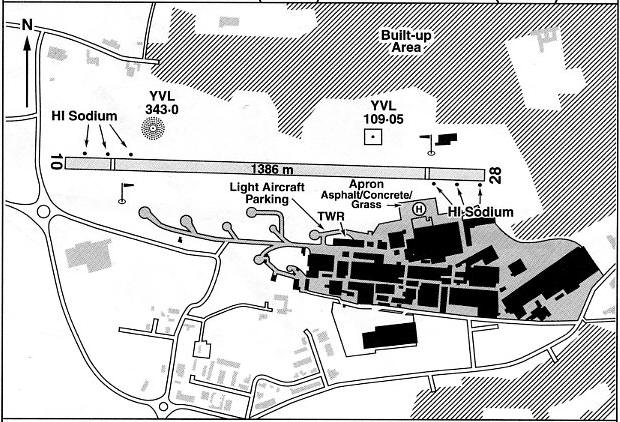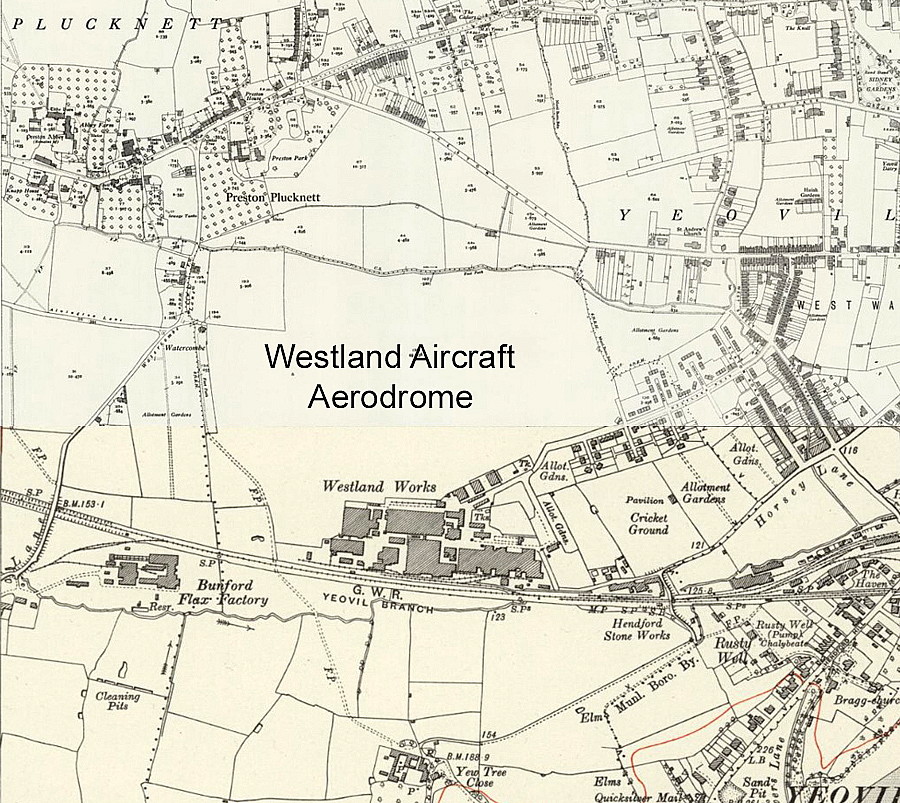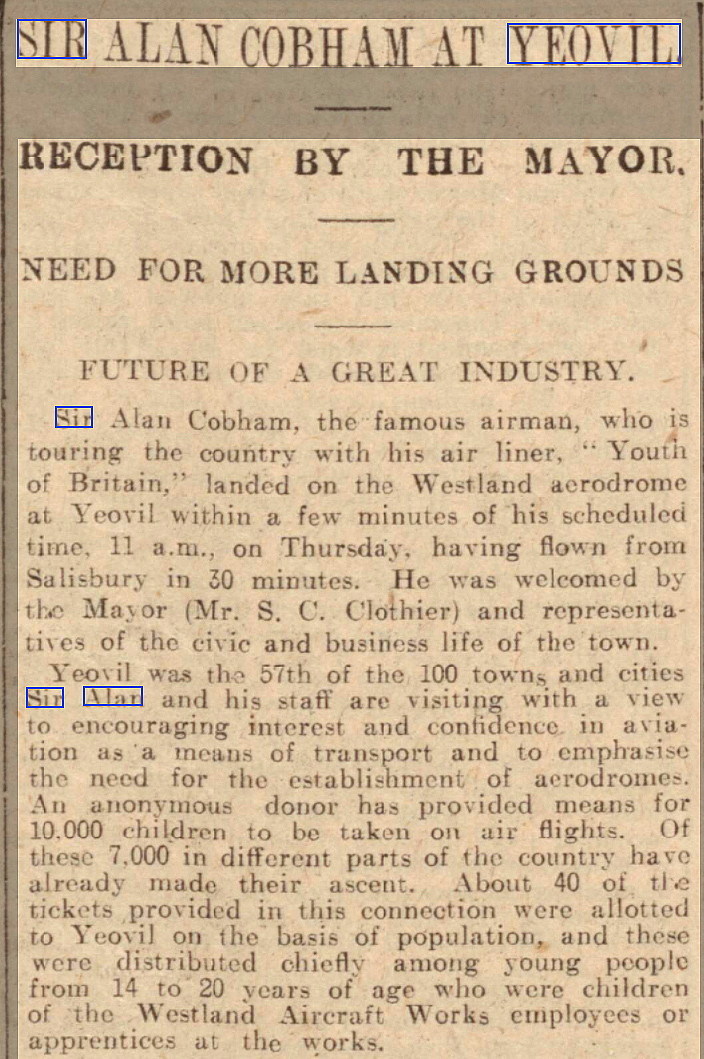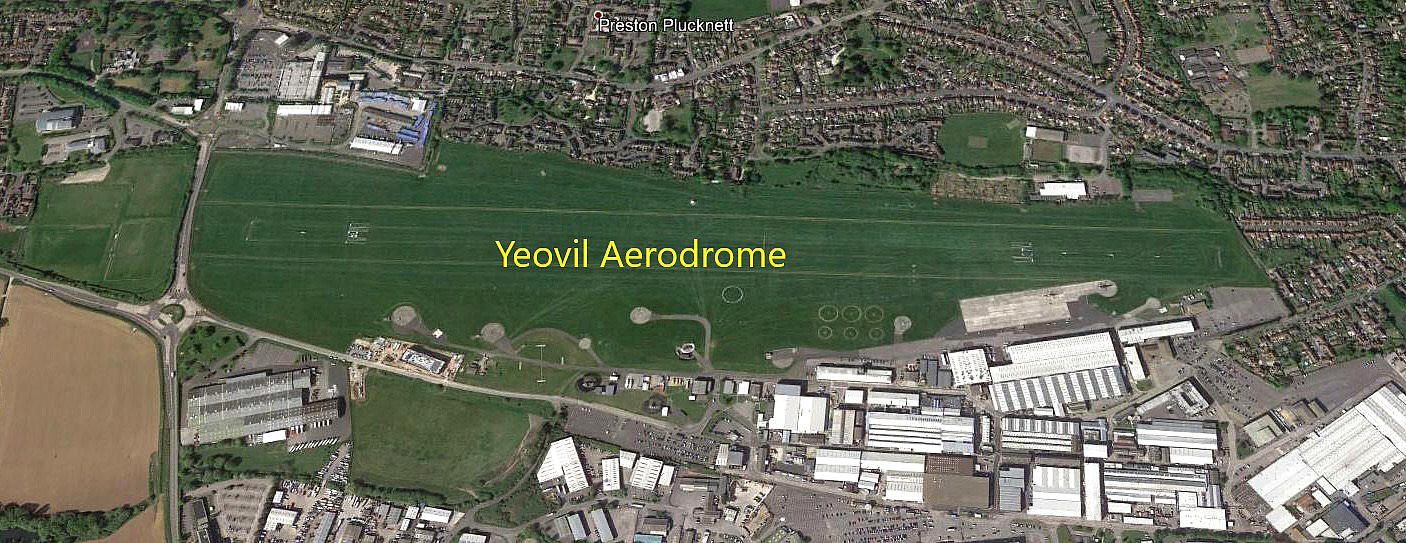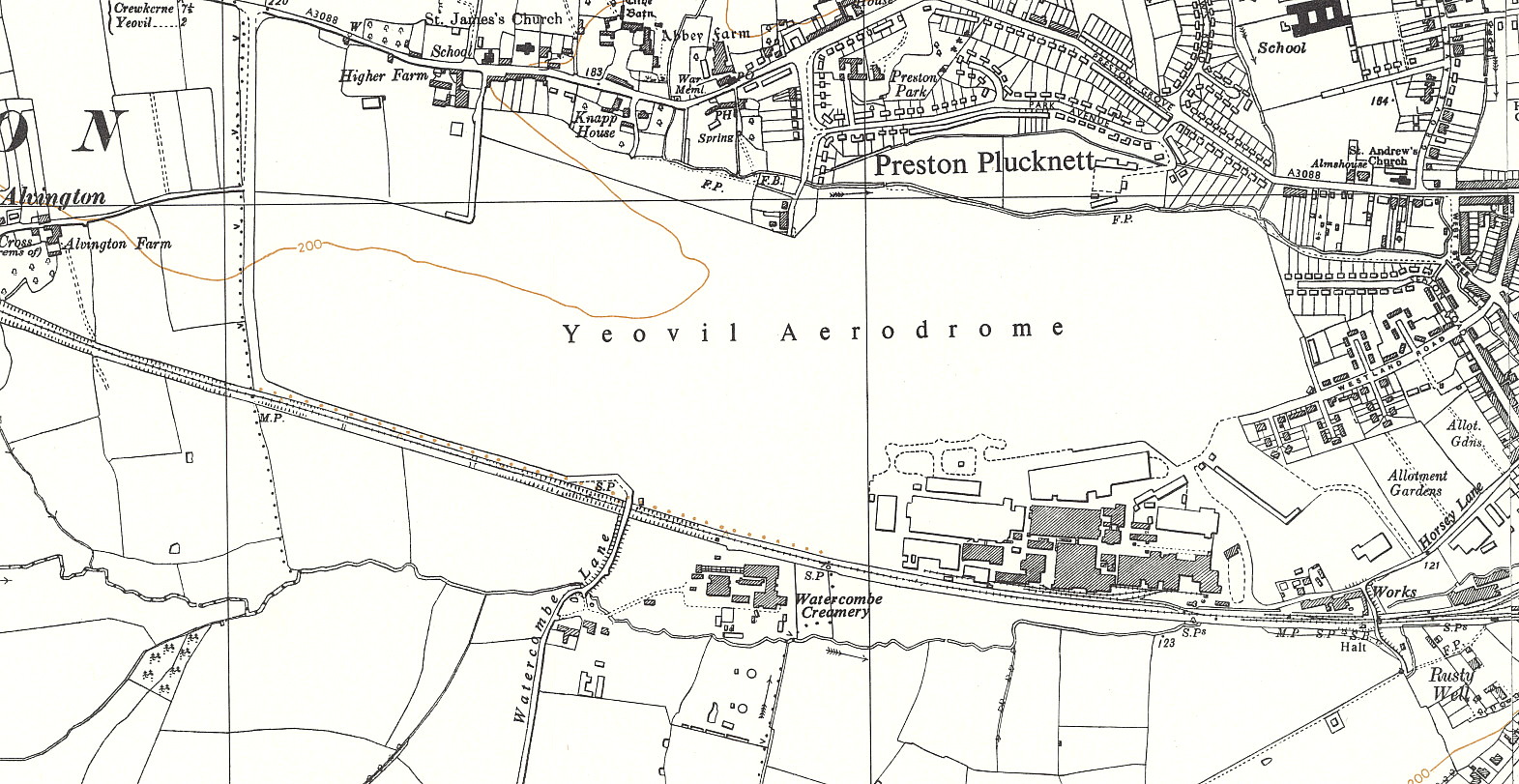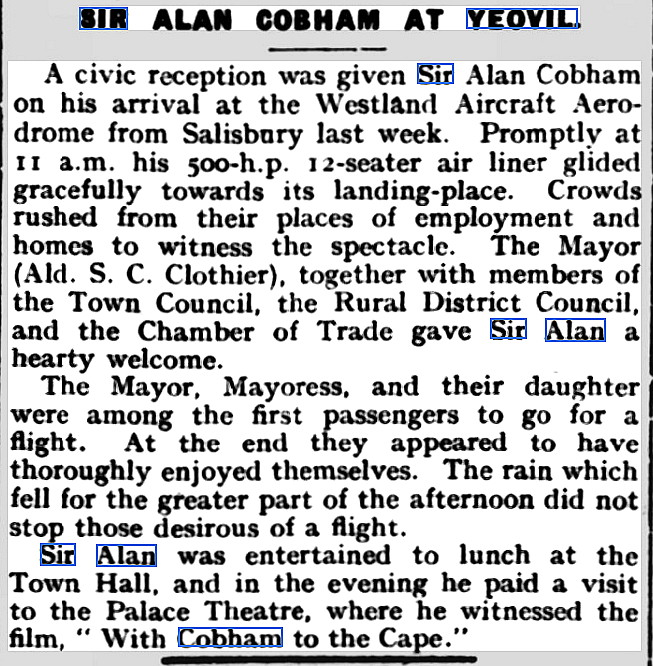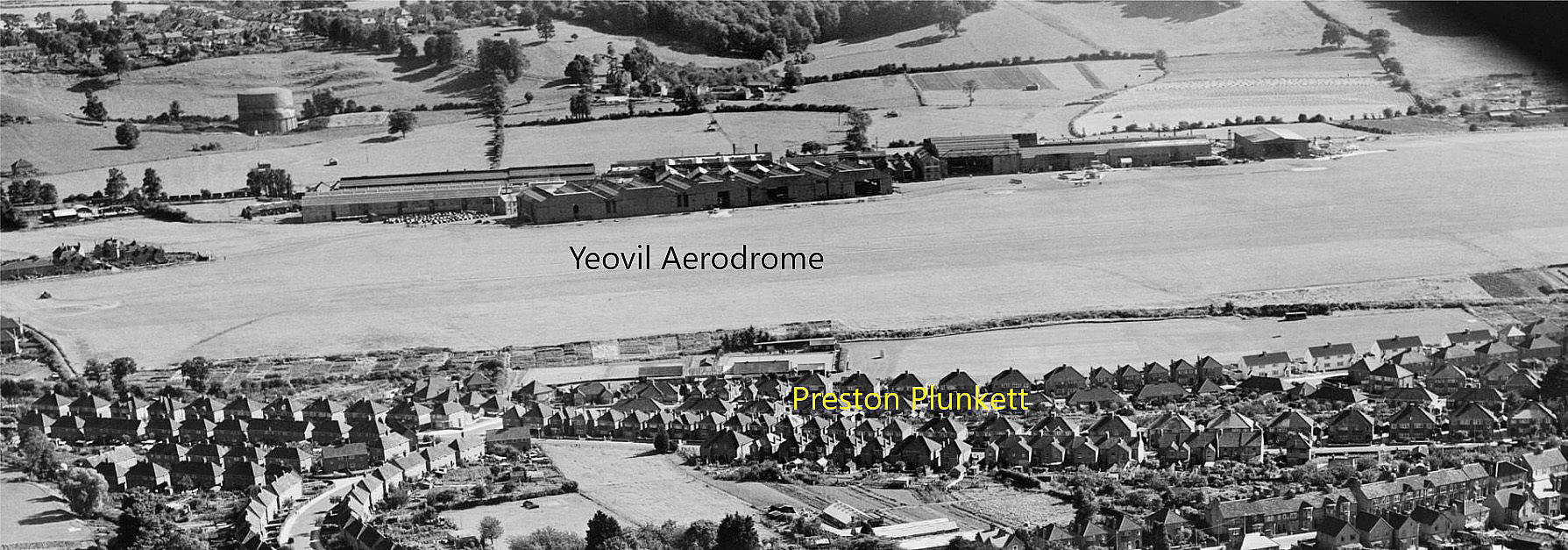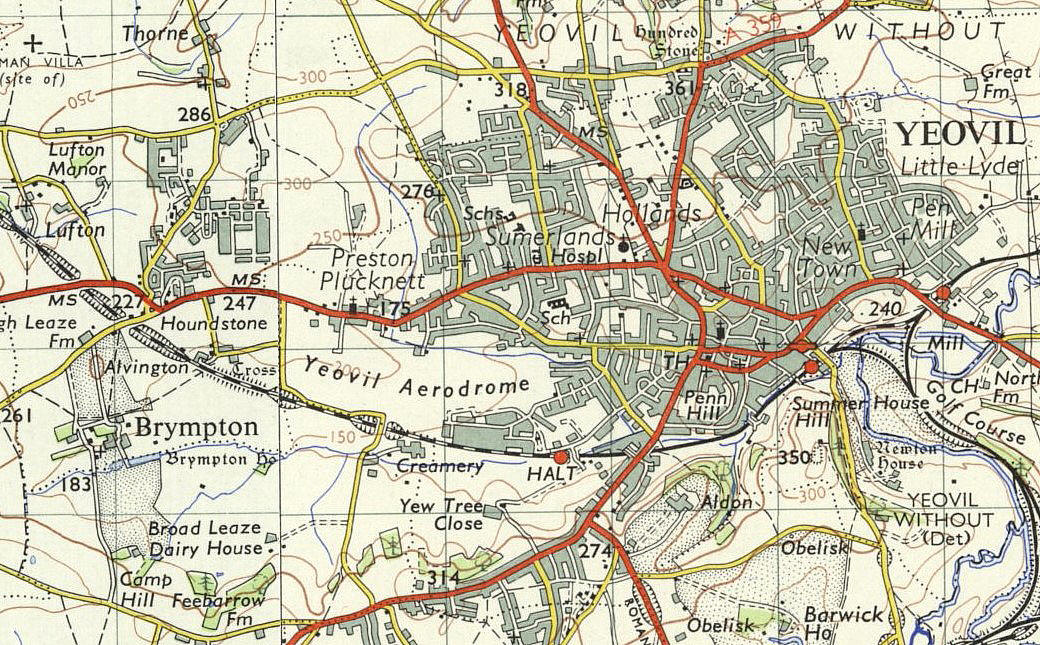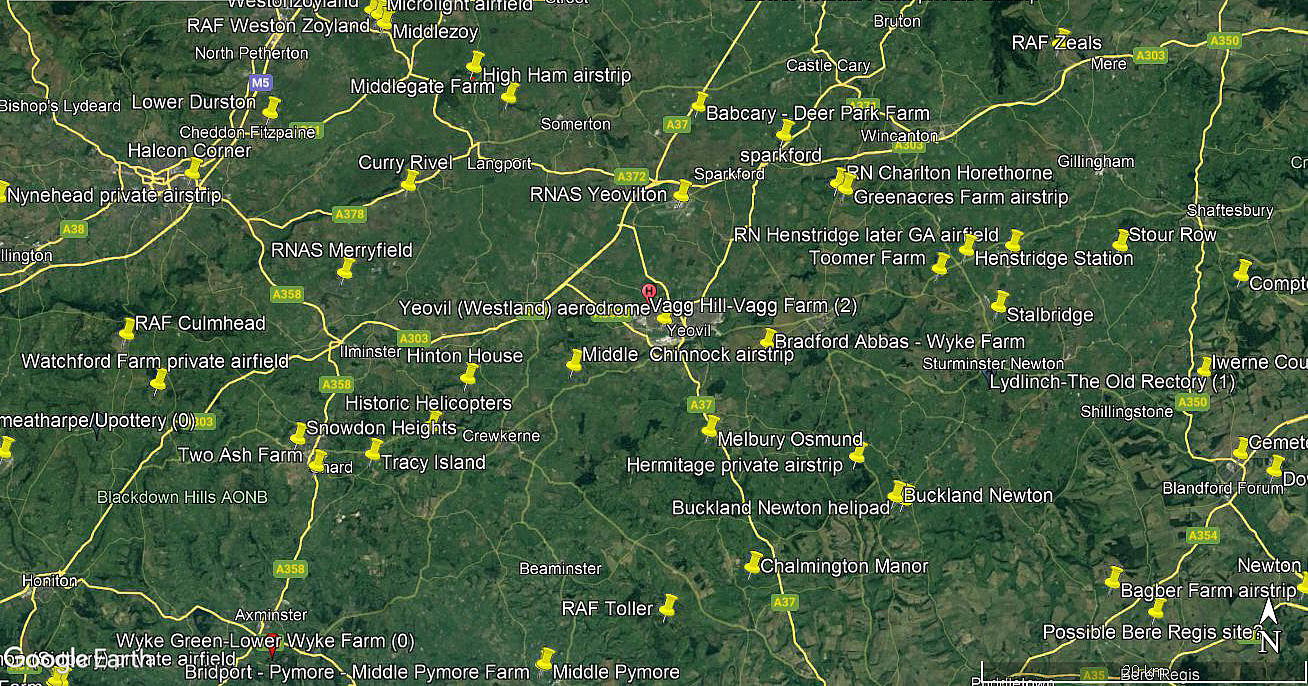Yeovil sites
YEOVIL: Gliding site
Operated by: Dorset Gliding Club
NOTES: Listed as operational in 1930
Trying to compile this 'Guide' over the last twenty five years or so, has been very much a case, quite often, of finding small bits of information, then later adding extra bits. In February 2024 I was kindly sent a list of gliding sites published in 1930. Lo and behold, this one was listed and guess what - it said; "Week-ends at Westland Aircraft Works, Yeovil."
So, that part answered - but for how long were they operating?
YEOVIL: Civil aerodrome (also known as WESTLAND FARM, and, in more recent years aka WESTLAND)
Note: The first two pictures by the author, were taken through perspex. The third picture (2018) was obtained from Google Earth ©
Manufacturing: It appears that the engineering firm Petters Ltd first started aircraft production on a limited scale for the British government at WESTLAND FARM in 1916
WW1: Petters Ltd (Westland Aircraft Works) later to become the Westland Company
Operated by:
1940: Westland Aircraft Co
1965: Westland Aircraft Ltd
1970s/1990s: Westland Helicopters
2000: GKN Westland Helicopters Ltd
NOTE:I have no idea where I found this postcard, but the caption raises a couple of issues needing to be resolved. Perhaps rather oddly at first glance it states: "Channel Islands Aviation History".
In December 2017 I was kindly contacted by Roger McElliott who informed me that the picture of OO-AGC which I had included in the CROYDON listing, was actually taken here.
SABENA operated three Westland Wessex types for a short period in the early 1930s, with two crew and only carrying four passengers. I then found information in my listings for the Channel Islands that Sir Alan Cobham's airline of the same period, had also chosen the Westland Wessex for at least one destination. Presumably, having three of the type, SABENA also used the Wessex for other marginal destinations, either/or by airfield size or limited passenger traffic.
PICTURES OF YEOVIL IN WW2
Note: It appears that the copyright of these pictures is now unknown?
Flying school: Westland Helicopter Flying Training School
Note: In the 1957 The Aeroplane directory, the Westland Helicopter Flying Training School, formed for: "Flying and theoretical instruction to qualify for helicopter endorsements on British Commercial and Private Pilots' Licence" were operating one Westland WS-51 Dragonfly.
Location: 1nm W of Yeovil
Period of operation: 1910 (?) certainly 1917 to present day
Note: These maps are reproduced with the kind permission of Pooleys Flight Equipment Ltd. Copyright Robert Pooley 2014.
Runways: WW1: ‘All-over’ grass airfield
1965: E/W 1585 grass
1990/2000: 10/28 1386x37 grass
NOTES: Petters approached the Government during the early stages of WW1 to offer their manufacturing facilities – up to that point engaged in producing farm machinery – and started producing aircraft designed by Short Bros.
COBHAM'S 1929 MUNICIPAL AERODROME CAMPAIGN
This was the 61st venue, on the 22nd August, for Sir Alan Cobham’s 1929 Municipal Aerodrome Campaign? This Tour, the first of its kind in the UK, started in May and ended in October with one hundred and seven venues planned to be visited. Mostly in England, but with two venues in Wales and eight in Scotland. In the end, with a couple of crashes and other setbacks, Cobham managed to visit 96 venues - still a magnificent achievement.
The aircraft he mostly used was the ten-seater de Havilland DH61 'Giant Moth' G-AAEV named 'Youth of Britain'. The punishing schedule he set himself seems quite astonishing today. I can also thoroughly recommend his memoirs in 'A Time To Fly'. The anonymous donor mentioned in one article below, who paid for around ten thousand children to be flown by Cobham, is, we now know - Lord Wakefield of Castrol Oil fame.
A MICHAEL T HOLDER GALLERY
Note: The newspaper article was published in the Western Gazette on the 23rd August 1929.
Note: The fifth item, a newspaper article, was published in the Central Somerset Gazette on the 30th August 1929. The last item, the area view, was taken from my Google Earth © derived database.
Of some interest perhaps, is the correspondent of the first newspaper article, above, stating that YEOVIL was the 57th venue on Cobham's Tour. It wasn't, being the 61st venue in fact. Also, being a tad pedantic, it was the 59th venue in the original plan. There is so much disinformation around regarding this Tour that Mike Holder, a great friend of this 'Guide', took it upon himself to set the record straight.
A mammoth task, to say the least, and with his help this 'Guide' now gives the most accurate and comprehensive account available anywhere. This involved to a large extent tracking down local newspaper accounts giving the exact date Cobham arrived at the many venues. At the time of writing, late February 2022, the task of adding and amending the individual listings is still ongoing. However, for a clearer overall picture please see my article: 'Sir Alan Cobham 1929'.
FLYING CIRCUS VENUES?
Is it safe to assume they used the aerodrome operated by the Westland Company? Experience has taught me that, as a gerneral rule, these 'Flying Circus' operations tended to avoid established aerodromes, much preferring a site where they were entirely independent to arrange their own operations.
If anybody can kindly offer advice and information, this will be much appreciated.
CD Barnards Air Tours in 1931?
Perhaps also the venue for one week in May 1932 for Modern Airways, (Crimson Fleet), UK Tour?
Probably also the YEOVIL venue on the 12th June 1935 when the Cobham Tour visited this town?
AN ASTONISHING DESIGN
11th October 1938. First flight of the Westland Whirlwind. An aircraft design so in advance of it’s time it never stood a chance? The main problem being that it was designed to be fitted with Rolls Royce Peregrine engines - which performed poorly at altitude. But, it was the fastest fighter aircraft in the world at that time - and for several years later. Having four cannons in its nose, unlike the Hurricane and Spitfire with just machine guns, made it a very formidable weapon.
Why it was not redesigned with Merlins remains a mystery. Various excuses are offered, but none add up. Just think about how the miserable Avro Manchester was transformed into the Lancaster when fitted with four Merlins. Surely fitting Merlins to the Whirlwind would have cost a fraction of the price. I also think it is interesting to compare the design of the Whirlwind with the Gloster Meteor. The similarities being very striking and obvious.
In early WW2 Westland were producing Lysanders and Whirlwinds, (the twin-engine fighter), and Spitfires.
THE BEA HELICOPTER AIRLINE
In 1947 it appears that BEA, (British European Airways), had established their Helicopter Experimental Unit which was set up with three Sikorsky S.51s and two Bell 47s. The S 51s were it seems Westland produced versions called the 'Dragonfly'. The scale and range of their proposed activities, (considering the operational scope of those early helicopters), was impressive, with several routes calling at multiple towns. Elsewhere in this Guide many of these sites are listed, with several pictures. For example look up HAYMILLS HELIPORT, LEICESTER HELIPORT and NOTTINGHAM HELIPORT.
THE 1970s
In 1975 they were producing Gazelles, Pumas and Sea Kings.
In 1977 the following types were based here: Westland SA.341G Gazelles G-BAGL and G-BCHM plus Westland Lynx G-BEAD all of Westland Helicopters Ltd. And, perhaps rather surprising (?) the Short SC7 Skyvan Srs.3-100 G-BEHZ also it seems. Why was this here?
SCANDALS
The history of the Westland organisation has been beset by alledged scandal especially in recent years but it goes far deeper than that. This is not to say that the Westland management were the perpetrators. Posibly far from it and perhaps being in fact victims of very deeply embedded corruption in British government circles?
A typical example to prove my point is that the Fairey Aviation Delta 2 had broken, (by a massive amount), the World Speed Record at 1,132mph in 1956, despite every sort of opposition by government departments to thwart them. After the record was broken officials at every level sought every opportunity to prevent further supersonic trials. Even though the Ministry of Supply had ordered this research aircraft to be built to do exactly this in the first place!
The people at Fairey did succeed in getting the trials done through ‘high-level’ friends in France and Norway. Much to the chagrin of senior people in Britain it seems who then decided to scotch the lot and arrange for Fairey Aviation to be sold to Westlands, a company with no experience, no knowledge and no interest in high-speed flight.
The BIG question to be asked is of course WHY?
ONE THEORY
One theory is that during and after WW2 the Americans, (“historically” the natural enemies of the British rather than the Germans incidentally), had used their eventual involvement in WW2 as a ‘God sent’ opportunity to destroy the British Empire. I was brought up to consider such a possibility utterly ridiculous, (being born in 1947), but I’m now having very serious second thoughts. Indeed, the more I look at the history the more it makes sense. It is obviously a hugely complicated situation to look at even now, especially with the Cold War being in operation during that epoch. It certainly was the over-riding concern at the time, but we’ve now a couple of decades or more to look back with hindsight. Nearly if not every major advance we made in aircraft design and associated research in the 1940s, 50s, 60s & 70s at least was, it is generally alledged, given to the USA free of charge by and large. And yet it seems, nothing was given back in return?
Obviously I’m not an expert, just somebody trying to understand what was really going on during this period. Unfortunately it’s not looking too good for the Americans. Not the American people of course, just their utterly awful and corrupt government - who now appear remarkably similar and aligned with ours of course. Especially if they’ve now pulled our strings since the end of WW2 ?
A WORLD SPEED RECORD
Despite all this ‘background’ Westland people did some amazing work in that period resulting in the ‘Lynx’ design. On the 11th August 1986 a specially modified Lynx, G-LYNX, set off from YEOVIL, across the Somerset levels, and established a World Air Speed Record for a helicopter at 249.10mph, (400.87kph). This record still stood, as far as I can see, in 2009. Has it been bettered?
THE S.61 SEA KING
It is very much a matter of opinion if the Westland version of the S.61 Sea King was superior to the American version. But one aspect of its forty year history in British military history was very clear in 2015 when it was due to be retired in 2016. Nothing had surpassed it and it really was arguably the best heavy helicopter of all time. I have bored my wife no end insisting that the best replacement for the Sea King - is the Sea King. It seemed nigh on 'bullet proof', quite literally sometimes in combat.
derek james
This comment was written on: 2018-02-25 16:45:33As young lads of 7 and 9 years of age my brother and I were evacuated from London to Yeovil and the house we were sent to overlooked Westland's airfield. I can remember seeing Spitfires (Seafires?) flying off the airfield which, I seem to remember had dark coloured dye or painted strips to appear like hedgerows to fool German pilots.
We'd love to hear from you, so please scroll down to leave a comment!
Leave a comment ...
Copyright (c) UK Airfield Guide















